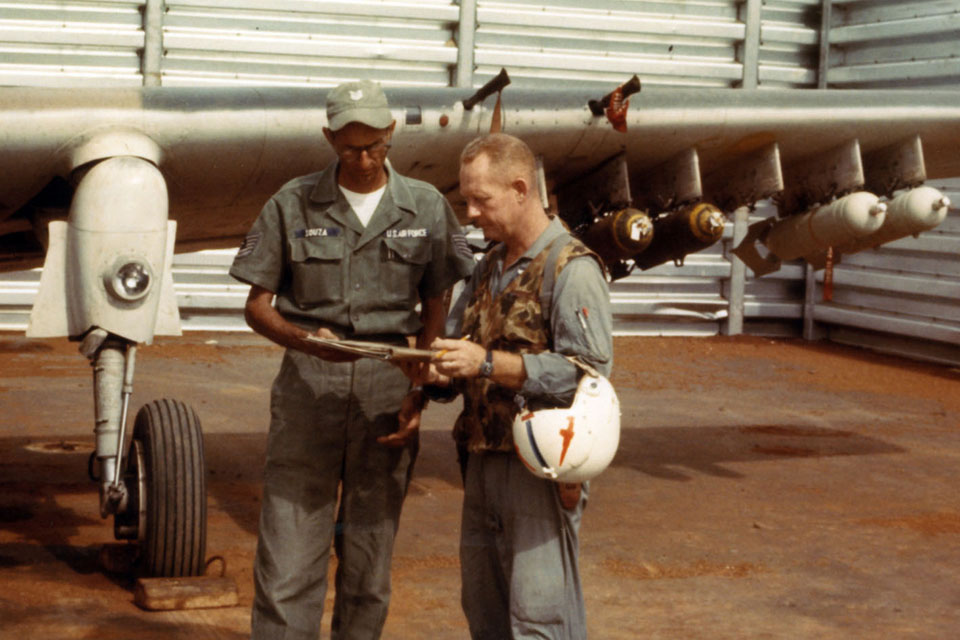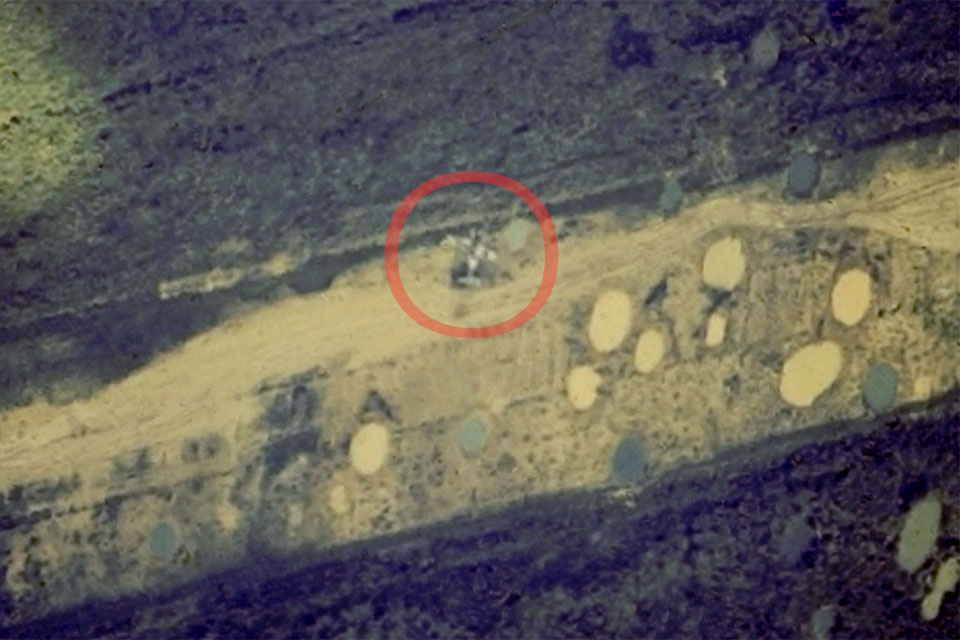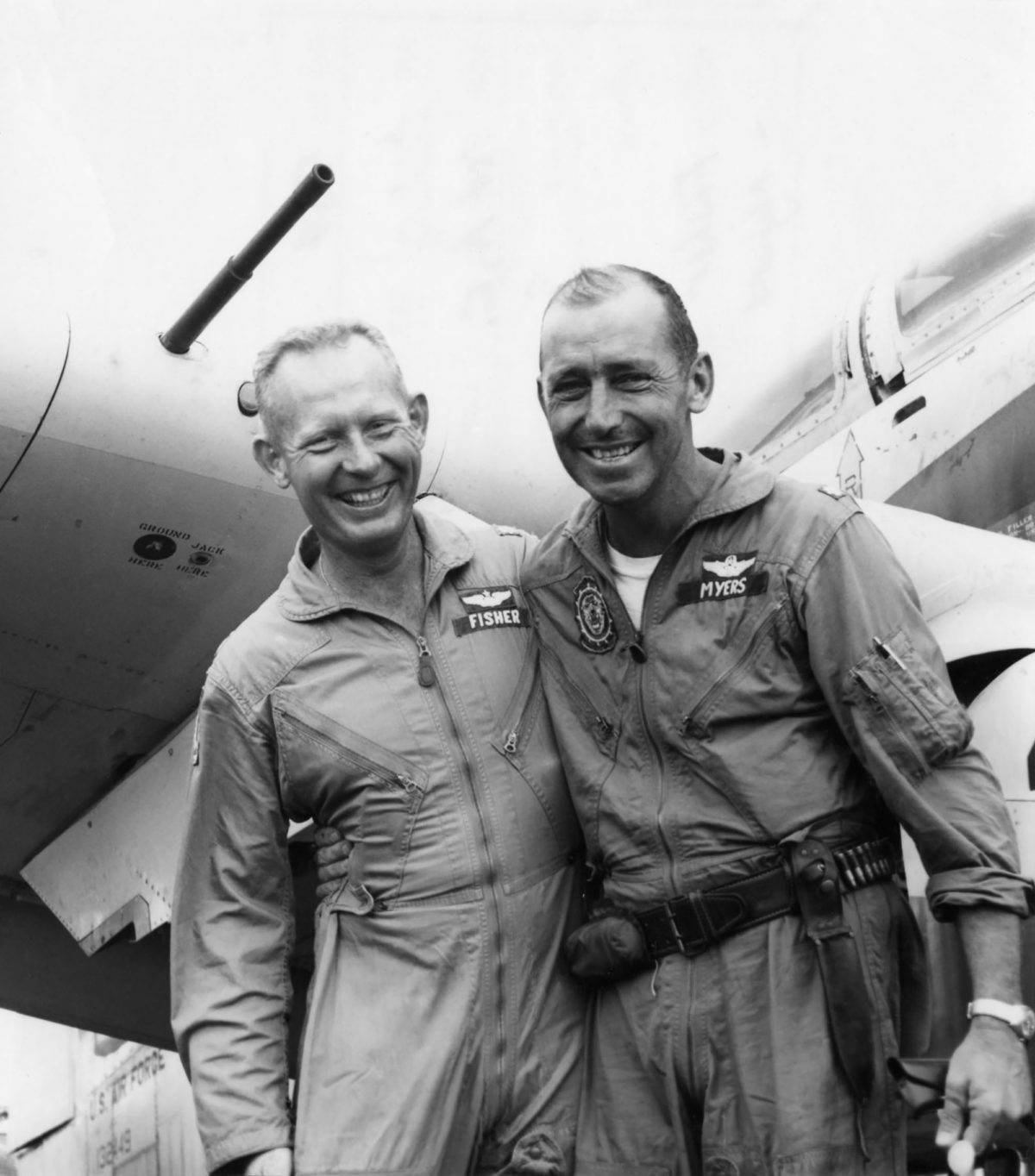First recipient of the Air Force Medal of Honor
On March 9, 1966, some 2,000 North Vietnamese attacked the isolated A Shau Special Forces camp, defended by 17 Green Berets, 210 local militiamen and a company of Mobile Strike Force (Mike Force) troops.
Air Force efforts to drop supplies, evacuate wounded and engage the enemy were met with withering groundfire. One AC-47 gunship was shot down, the heroism of the pilot and co-pilot reflected in posthumous Air Force Cross awards. Five airmen received Silver Stars on the battle’s first day. One was an A-1E Skyraider pilot, Maj. Bernard Francis “Bernie” Fisher.
Fisher, born Jan. 11, 1927, in San Bernardino, California, was a World War II Navy veteran who had joined the Idaho National Guard, enrolled at the University of Utah, signed up for the Air Force ROTC program and received his commission in 1951.
In 1964 Fisher and his wife, Realla, moved to the Florida Panhandle, where he learned to fly the Skyraider at Hurlburt Field. Despite being a slow-speed, propeller-driven aircraft in the jet age, the Skyraider displayed a durability and maneuverability ideal for low-level flight and observation in Vietnam, although it was an easy target for enemy gunners.
Fisher requested duty in Vietnam and in mid-1965 was assigned to the 1st Air Commando Squadron. In October 1965, he received the Distinguished Flying Cross for flying dangerously low to cover a rescue helicopter that retrieved a downed fighter pilot.

But it was the 1966 A Shau mission that tested the limits of Fisher’s endurance and courage. By the end of the first day’s fighting on March 9, he was exhausted. However, the Green Berets at the camp were still desperately fighting for their survival.
Fisher and fellow Skyraider pilots were back with daylight, flying low in the fog-shrouded valley. During the night the North Vietnamese troops had taken control of the base camp, forcing the Green Berets against their last line of defense, bunkers at the north end of the camp. They wouldn’t be able to hold out much longer.
Fisher led his wingman and two Skyraiders of the 602nd Fighter Squadron (Commando) beneath the cloud cover to attack the enemy. As Fisher led a third pass, Maj. Dafford “Jump” Myers radioed, “I’ve been hit and hit hard.”
Fisher radioed back, “You are on fire and burning clear back to your tail.” Myers realized that his plane was damaged too severely to fly, and he headed for the battle-scarred airstrip below. Ignoring enemy groundfire, Fisher flew parallel to guide him down. After a fiery 800-foot wheels-up skid Myers’ Skyraider nosed into a dirt embankment. Myers managed to get clear and dove into a ditch moments before the plane exploded.
Fisher flew down the airstrip only 20 feet above the ground. As he neared Myers’ Skyraider, the downed pilot leaped up and waved his hands, then ducked back into the ditch and the weeds. Fisher knew the ground was swarming with the enemy, and Myers would probably not survive long enough for a rescue helicopter to reach him.

“I’m going in,” Fisher radioed to the other pilots. He lined up on the embattled runway while his wingman tried to provide covering fire. With groundfire shredding his Skyraider, Fisher came in hard and fast, dodging the tangled metal and deep craters that had turned the airstrip into a moonscape. When the Skyraider finally came to a stop, Myers ran through enemy fire and started to scramble up the plane’s wing. Fisher grabbed him by the collar, pulled him into the cramped cockpit and began the dangerous taxi through the rain of bullets to lift out of the hell below.
For those actions, Fisher on Jan. 19, 1967, became the first person to receive the U.S. Air Force Medal of Honor, which was authorized by Congress in 1956 and became effective in 1965. (Previously Air Force personnel received the Army Medal of Honor.)
After Fisher retired in 1974 as a colonel, he and Realla lived in Kuna, Idaho. He died Aug. 16, 2014, and was buried at the Idaho State Veterans Cemetery.
Doug Sterner, an Army veteran who served two tours in Vietnam, is curator of the world’s largest database of U.S. military valor awards.
First published in Vietnam Magazine’s April 2017 issue.

